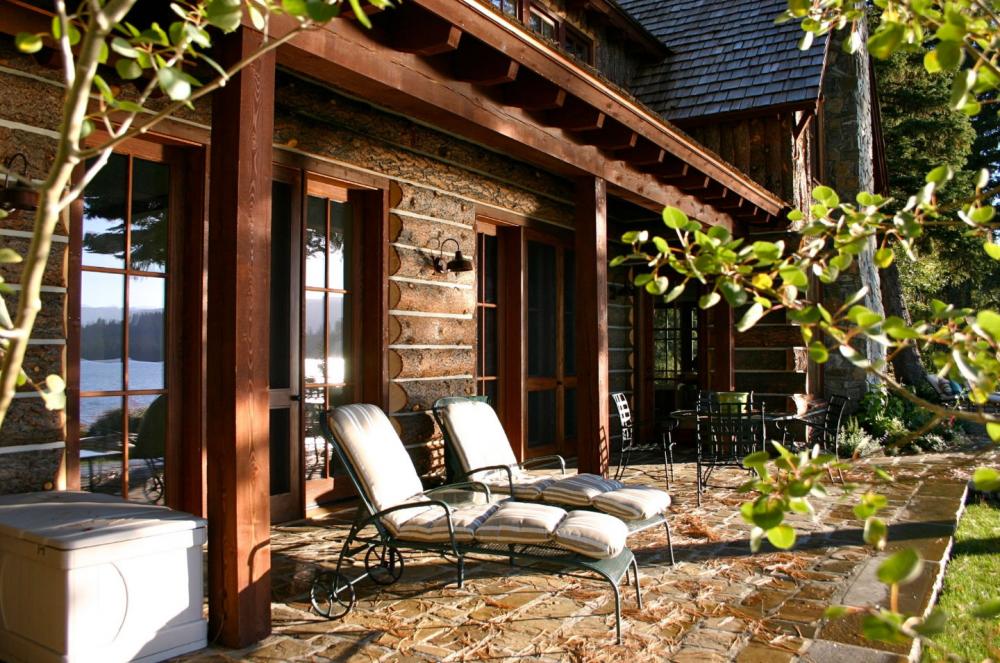
This stunning log cabin is located in Sylvan Creek. You will be amazed. This log house is located on Payette Lake’s Northwest bank and shows off the architect’s talent for creating spacious log cabins that look modest to passersby. The old family log buildings on Payette were demolished to make way for newer structures. However, the lakefront area still contains a number. The clients of this project wanted more space than their existing, outdated log house could offer, but they also wanted to maintain the same feeling as the old cabin.
The use of Dutch Hips on the gable ends is one of the features which helps to minimize the architectural form. The bark-on-logs siding gives it a vintage feel. The property had a stream that ran through it all year long on its way to Lake Michigan. This presented a unique challenge to get from the garage/guest rooms to the main house. The solution was a connecting bridge. This log cabin has a beautiful finish inside and out. It is made up of plenty of wood and stonework. The log cabin’s wooden beams and floors create a warm glow. Multiple windows fill the space with natural lighting.
Today, log cabins are more popular than ever. Log cabins date back hundreds of years. They are durable, rustic designs with a rich history. Log cabins are around for over 5000 year. Log cabins were originally built to protect against the elements. Today, you can find them in more luxurious designs. Log cabins are rich in history and have an interesting background. The first log houses were built in Northern Europe. Later, they were brought to America where they have become a part of the American architectural design. The Swedes introduced log house designs in America first.
Some people might say that wood cabins originated in Germany, while others may claim that log cabins are the product of British settlers. No matter where log cabins originated, they served many purposes. They were shelters from the weather and homes for people. Log cabins were built by settlers in many parts of America including New York, Kentucky and Tennessee. In these areas, thick forests made log houses and homes for the backwoodsman possible. In the early days of American log houses, a cabin was built as a stacking of tree trunks stacked on top of each other with interlocking notches. Some log cabins are constructed by nailing the edges together. Log cabins have sturdy foundations on which the walls of the stacked trunks are placed.










For more information about this story, please visit: Mccalldp
Leave a reply













